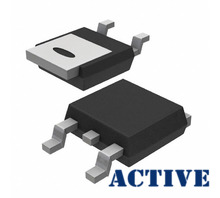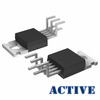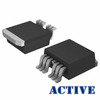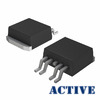
BUK6207-30C,118
- Artikelnummer:
- BUK6207-30C,118
- Hersteller:
- NXP Semiconductors / Freescale
- Beschreibung:
- MOSFET N-CH 30V 90A DPAK
- Bleifreier Status / RoHS Status:
- Enthält Blei / RoHS nicht konform
- verfügbare Anzahl:
- 79379 Pieces
- Lieferzeit:
- 1-2 days
- Datenblatt:
- BUK6207-30C,118.pdf
Einführung
We can supply BUK6207-30C,118, use the request quote form to request BUK6207-30C,118 pirce and lead time.XXX.com a professional electronic components distributor. With 3+ Million line items of available electronic components can ship in short lead-time, over 250 thousand part numbers of electronic components in stock for immediately delivery, which may include part number BUK6207-30C,118.The price and lead time for BUK6207-30C,118 depending on the quantity required, availability and warehouse location.Contact us today and our sales representative will provide you price and delivery on Part# BUK6207-30C,118.We look forward to working with you to establish long-term relations of cooperation
Spezifikation
| Bedingung | New & Unused, Original Packing |
|---|---|
| Ursprung | Contact us |
| VGS (th) (Max) @ Id: | 2.8V @ 1mA |
| Vgs (Max): | ±16V |
| Technologie: | MOSFET (Metal Oxide) |
| Supplier Device-Gehäuse: | DPAK |
| Serie: | TrenchMOS™ |
| Rds On (Max) @ Id, Vgs: | 5.2 mOhm @ 15A, 10V |
| Verlustleistung (max): | 128W (Tc) |
| Verpackung: | Cut Tape (CT) |
| Verpackung / Gehäuse: | TO-252-3, DPak (2 Leads + Tab), SC-63 |
| Andere Namen: | 568-6977-1 BUK620730C118 |
| Betriebstemperatur: | -55°C ~ 175°C (TJ) |
| Befestigungsart: | Surface Mount |
| Feuchtigkeitsempfindlichkeitsniveau (MSL): | 1 (Unlimited) |
| Bleifreier Status / RoHS-Status: | Contains lead / RoHS non-compliant |
| Eingabekapazität (Ciss) (Max) @ Vds: | 3470pF @ 25V |
| Gate Charge (Qg) (Max) @ Vgs: | 54.8nC @ 10V |
| Typ FET: | N-Channel |
| FET-Merkmal: | - |
| Antriebsspannung (Max Rds On, Min Rds On): | 4.5V, 10V |
| Drain-Source-Spannung (Vdss): | 30V |
| detaillierte Beschreibung: | N-Channel 30V 90A (Tc) 128W (Tc) Surface Mount DPAK |
| Strom - Ununterbrochener Abfluss (Id) bei 25 ° C: | 90A (Tc) |
| Email: | [email protected] |
läst Nachrichten
- Mouser liefert Glasfaseranschlüsse für Mil-Aero-Anwendungen
- Jacarem unterzeichnet Franchise für EDAC-Steckverbinder
- Ein Blick vom RISC-V-Gipfel
- Low-Profile-Steckverbinder sind robust genug für die Industrie
- Benötigen Sie eine beleuchtete Tischlupe?
- Die 100Mips DSP-MCU für die Motorsteuerung ist die kleinste von Microchip
- Nicht-ITO-transparente Leiter konkurrieren um den Markt für faltbare Displays
- Electronica: Wasserdichte professionelle Steckverbinder für den Außenbereich
- Seitenerkennungsschalter sind verdammt klein
- Electronica: Video Interview - Datenmodul auf dem PCAP-Touchscreen easyTOUCH
- Electronica: Bluetooth 5 Energy Harvesting-Schalter
- Ordentliche Verpackung für RS232-IO-Link-Konverter für industrielle Netzwerke





